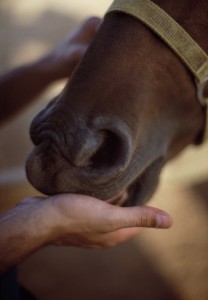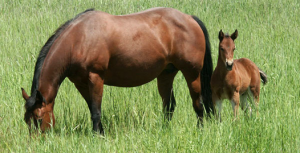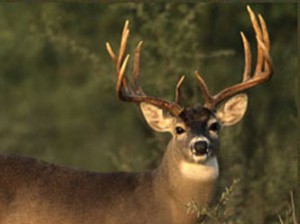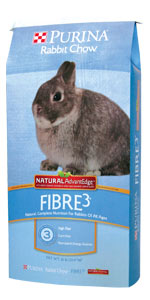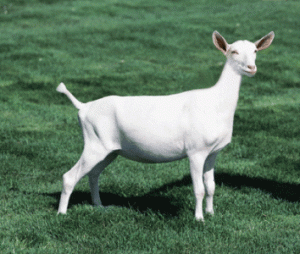 Good nutrition, good health and sound management are essential to ensuring a healthy kid. Check out the following tips for the safe birth of your new goat.
Good nutrition, good health and sound management are essential to ensuring a healthy kid. Check out the following tips for the safe birth of your new goat.
Good Nutrition
Before breeding your goat you need to begin thinking about nutrition. A doe should be neither underweight nor overweight at the time of breeding. By feeding her a nutritious diet such as Purina® Goat Chow® or Show Chow® Goat Ration along with natural forage, you help ensure that she won’t need to overcome any nutritional deficiencies during pregnancy and you can be sure that she’s getting the proper balance of vitamins and minerals she needs to produce healthy kids.
Five months, or 150 days, is the gestation period for goats. During the first three months, you can feed the doe as usual and allow her to maintain her normal healthy exercise routine of walking and grazing. Healthy exercise is important because she’s going to need strength at the end of her pregnancy to carry the extra weight of a fetus or fetuses.
In the last two months of pregnancy, the feeding routine may need to change. During these final weeks, the unborn baby or babies are growing at a tremendous rate in preparation for birth. Depending on the size of the unborn kids, a doe may not have enough rumen capacity to eat as much as she usually does. Without proper nutrition, she’s more likely to have smaller, weaker kids, yet she simply cannot consume enough foodstuffs to get the nutrition she needs (especially if they’re of poor quality).
Now is the time to increase the concentrate (grain) portion of her diet and reduce the hay portion (it’s very important to do this gradually so as not to change the rumen pH too fast). A small amount of fat added to the feed is another way to increase her energy intake. Providing smaller, more frequent meals will also allow her to consume more energy.
Water is the major component of amniotic fluid and milk and should be made freely available at all times throughout the pregnancy and lactation.
Good Health
Pregnancy toxemia is a disease often seen in goats, most often in dairy goats. During late-term pregnancy, especially when carrying multiple kids, a doe may be unable to derive all the energy she needs from feed. As a result, the doe’s body begins to extract energy from its fat reserves. The breakdown of large amounts of fat results in compounds called ketones floating around in the blood. In large concentrations these ketones have a toxic effect and the animal can develop acidosis of the blood. Symptoms include apathy, a rough coat and disorientation. Your vet will need to administer glucose and electrolytes to help your goat get well.
By getting more energy into the later-term pregnant doe you can prevent ketosis or pregnancy toxemia. Simply increase the grain portion of her diet and add fat as needed, as described previously.
In addition, about 30 days before the due date, vaccinate against Clostridium perfringes Types C & D and tetanus. By vaccinating in advance, you will give the doe’s immune system time to produce antibodies that can be passed along to her newborn kids through the colostrum.
Sound Management
It is important during the final two months of pregnancy to keep unnecessary stress to a minimum. Avoid transporting the doe for long distances and don’t perform any routine management activities such as foot trimming.
As the delivery date approaches, you may notice signs that your doe is preparing to go into labor. About two weeks prior to kidding, you may want to consider moving your doe to a kidding pen where you can observe her more carefully.
One of the first signals that the big day is near is a drop in appetite. Some does may paw the ground, become cranky or even vocalize. In fact, any behavior that is out of the ordinary can be an indicator that she is getting ready to give birth.
When the time comes to go into labor, she will probably look for a secluded spot to deliver her babies. At this point, it’s best to allow nature to take its course. Kidding normally takes about 20 minutes. If the doe is straining longer than that, it could indicate an abnormal presentation and she may need your help. Always keep the phone number of your veterinarian close at hand.
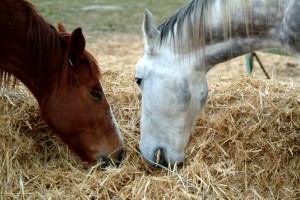 Am I feeding enough of the right type of feed?
Am I feeding enough of the right type of feed?